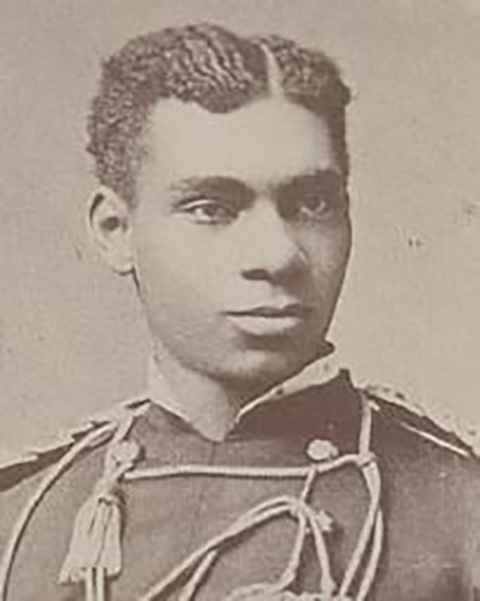By Berry Craig
NKyTribune columnist
There are two memorials to mountain man “Peg Leg” Smith in Borrego Springs, Calif. But he is unsung in his native Garrard County.
He might merit a monument in Kentucky, maybe in Lancaster, the Garrard County seat.
After all, when Smith was shot in the leg, he reputedly amputated his bloody limb himself and hacked a crude prosthesis from a nearby tree.

“That’s not the half of it,” said Murray State University historian and author Ted Belue, an authority on frontier history. “Supposedly, Peg Leg later got into a fight in a bar, pulled off his wooden leg, killed two men with it and beat up another one.”
Fact or fiction, Smith’s feats are apparently all but unknown in Garrard County, where he was born Thomas Long Smith in 1801. Nonetheless, Peg Leg is famous in Western folklore.
Smith roamed the Rockies as a fur trapper. He also was linked to a lost gold mine near Borrego Springs.
Anyway, Smith started the Peg Leg legend himself, though others evidently embellished it through the years. After he retired to San Francisco, Smith told tales for drinks in bars and stood on street corners mimicking Indian war cries for money.
It is not certain if Smith brained anybody with his wooden leg. But he inspired Harry Oliver, a retired Hollywood art director, to found “Peg Leg’s Liars Club” in Borrego Springs in 1916.
Oliver even salted the desert with fake wooden legs to spark more stories about Smith and his purported mystery mine.
A modern version of the old club sponsors an annual “Peg Leg Liar’s Contest” at the Smith monuments. One is a 1960-vintage stone column with a bronze plaque explaining that Peg Leg “was a spinner of tall tales.”
The other memorial is a heap of stones. “LET THOSE WHO SEEK PEGLEG’S GOLD ADD TEN ROCKS TO THIS PILE” instructs a nearby sign.
By reputation, Smith was as tough as buffalo hide, a mountain man equal in size, courage and resourcefulness to his storied sidekick and fellow Kentuckian, Milton Green Sublette, the “Thunderbolt of the Rocky Mountains.” About the same age as Smith, Sublette hailed from Crab Orchard in Lincoln County.
Smith once saved Sublette’s life in an Indian attack. Supposedly, Sublette was a witness to Smith’s celebrated 1827 self-amputation. Native Americans ambushed Smith, Sublette and some other mountain men who were trapping beaver, according to the story. A bullet stuck Smith just below his right knee.
He begged his companions to cut off his leg. When none would oblige him, Smith grabbed a knife, fortified himself with a slug of whiskey, and proceeded to slice away the bloody tissue down to the tibia and fibula.
Unable to cut through the bones, he had his buddies file some teeth into the knife blade and he finished the amputation with his improvised saw.
Everybody expected Smith to die. Yet he soon gained enough strength to fashion his legendary leg, or so the story went.
Belue said there are many variants of the amputation tale, “depending upon who was telling it and how drunk the teller was. These guys tended to be great drunks and liars–both resume enhancers for mountain men–and politicians.”
Belue said friendly Indians may have helped him cut his foot off. “Milton Sublette…said he did it. The Utes dubbed him ‘Wa-ke-to-co,’ man with one foot.”
Versions of the story, too, have Smith, or whoever, removing the leg above the ankle, not below the knee.
Other Smith stories abound. “He did shoot a mountain goat to feed his men with a gold nugget panned from the Colorado that fit his rifle bore and then retrieved his nugget upon dressing the goat,” Belue said.
Smith survived to age 65, possibly outliving the other trappers; Sublette, who also lost a leg battling Indians, died at age 35.
“I guess by the time Smith was an old man, there was nobody left to dispute his version of the story,” Belue said.
“Good or bad, he was the real deal with the bark left on.”
Berry Craig of Mayfield is a professor emeritus of history from West Kentucky Community and Technical College in Paducah and the author of six books on Kentucky history, including True Tales of Old-Time Kentucky Politics: Bombast, Bourbon and Burgoo, Kentucky Confederates: Secession, Civil War, and the Jackson Purchase, and, with Dieter Ullrich, Unconditional Unionist: The Hazardous Life of Lucian Anderson, Kentucky Congressman. Reach him at bcraig8960@gmail.com


















